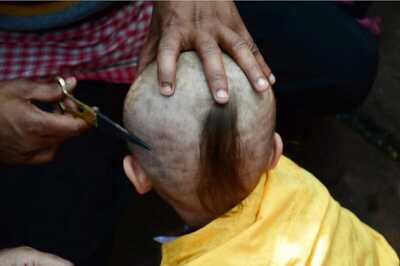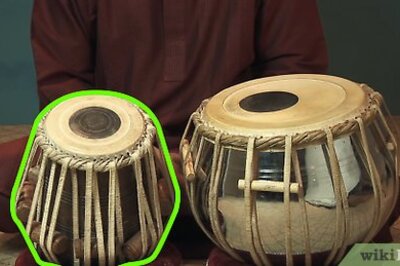
views
In a first, auxiliary nurse midwives (ANMs) and ASHA workers in Uttar Pradesh’s Bareilly district will visit patients affected by the ‘killer’ plasmodium falciparum (PF) and plasmodium vivax (PV) malaria. This will be done in order to ensure that the patients undergo full treatment of three and 14 days respectively for the mosquito-borne disease.
The health workers, who get Rs 75 incentive per case, will visit the houses of PF malaria patients daily while PV malaria patients will be covered on the first, third, seventh and 14th day of treatment.
Around 700 cases of ‘killer’ PF malaria and 18,400 cases of PV malaria were detected in Bareilly from January 1 to August 20 in Bareilly. In 2018, a total of 17,425 patients were tested positive for PF malaria and 20,057 were detected with PV malaria in Bareilly district.
Dr Awadhesh Yadav, joint director (malaria), who visited Bareilly recently, told Times of India (TOI), “If a patient doesn’t undergo complete treatment, he or she can carry parasite in his or her body which is a source of transmission of disease. Under National Health Mission, ANMs/ ASHA will get incentive of Rs 75 per case for ensuring radical treatment and Rs 15 per case for conducting rapid diagnostic test to check whether a person is suffering from malaria or not.”
However, Yadav added that the health workers will still get Rs 15 incentive for checking on fever patients who test negative for malaria.
Officials suspect there are number of patients who have not completed treatment even though the health department has no record of such cases. “In absence of radical treatment, malaria parasite remains in the patient’s blood can be transmitted to other persons through mosquitoes,” said Yadav.
Due to the spurt in cases of malaria cases in the district following rainfall, the health department had started had identified five sensitive blocks for intensified active case finding. Teams of trained ANMs are visiting villages situated in these blocks to conduct rapid diagnostic test on fever-affected residents. Those who test positive for malaria are referred to the nearest health centre for immediate treatment.
While there was a decline in total number of Malaria cases in India in 2018, “less susceptible” states like Uttar Pradesh saw an increase with 65,000 cases of the vector-borne disease in 2018 from 30,000 the previous year, according to data from National Vector Borne Diseases Control Programme.

















Comments
0 comment